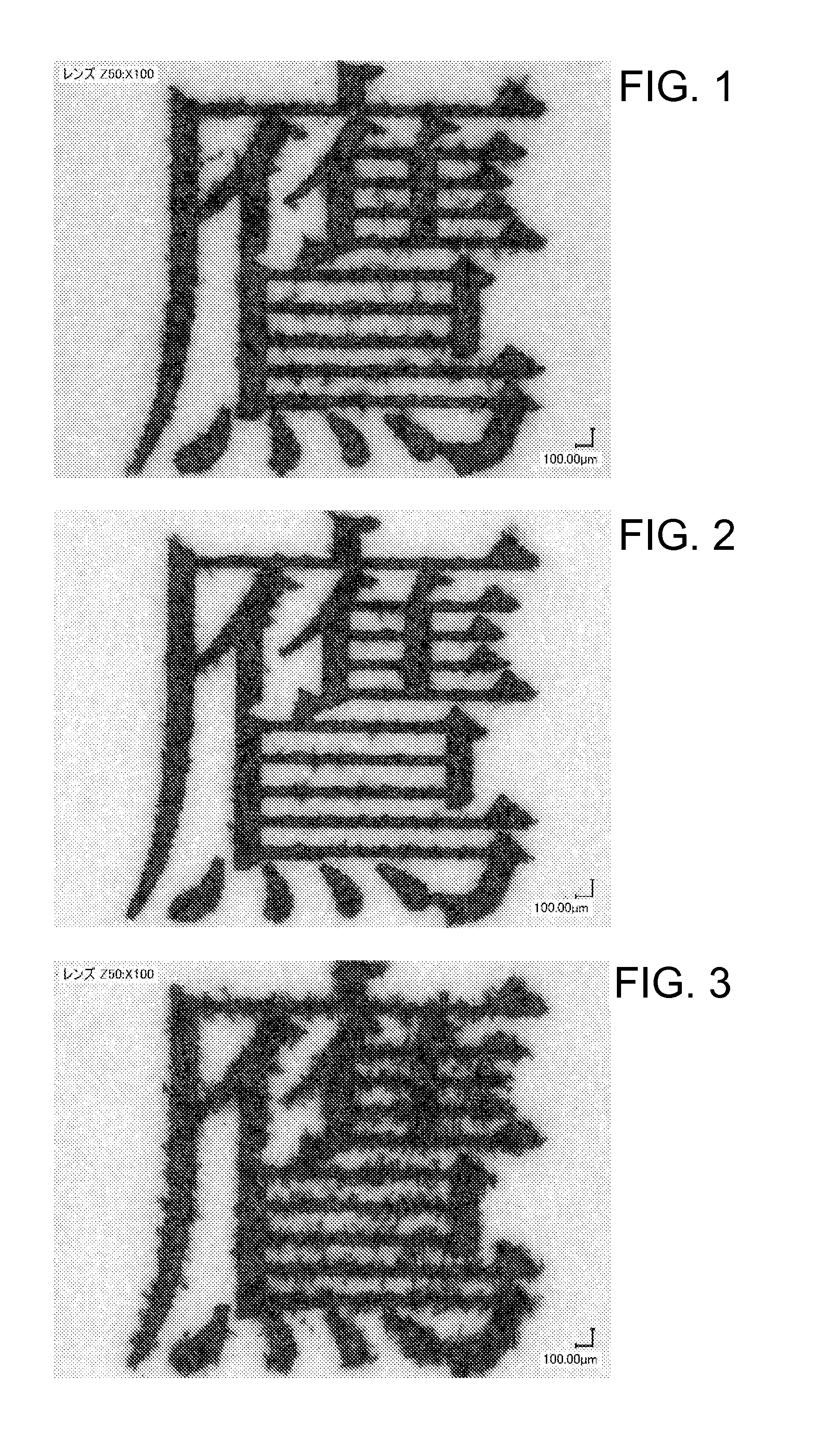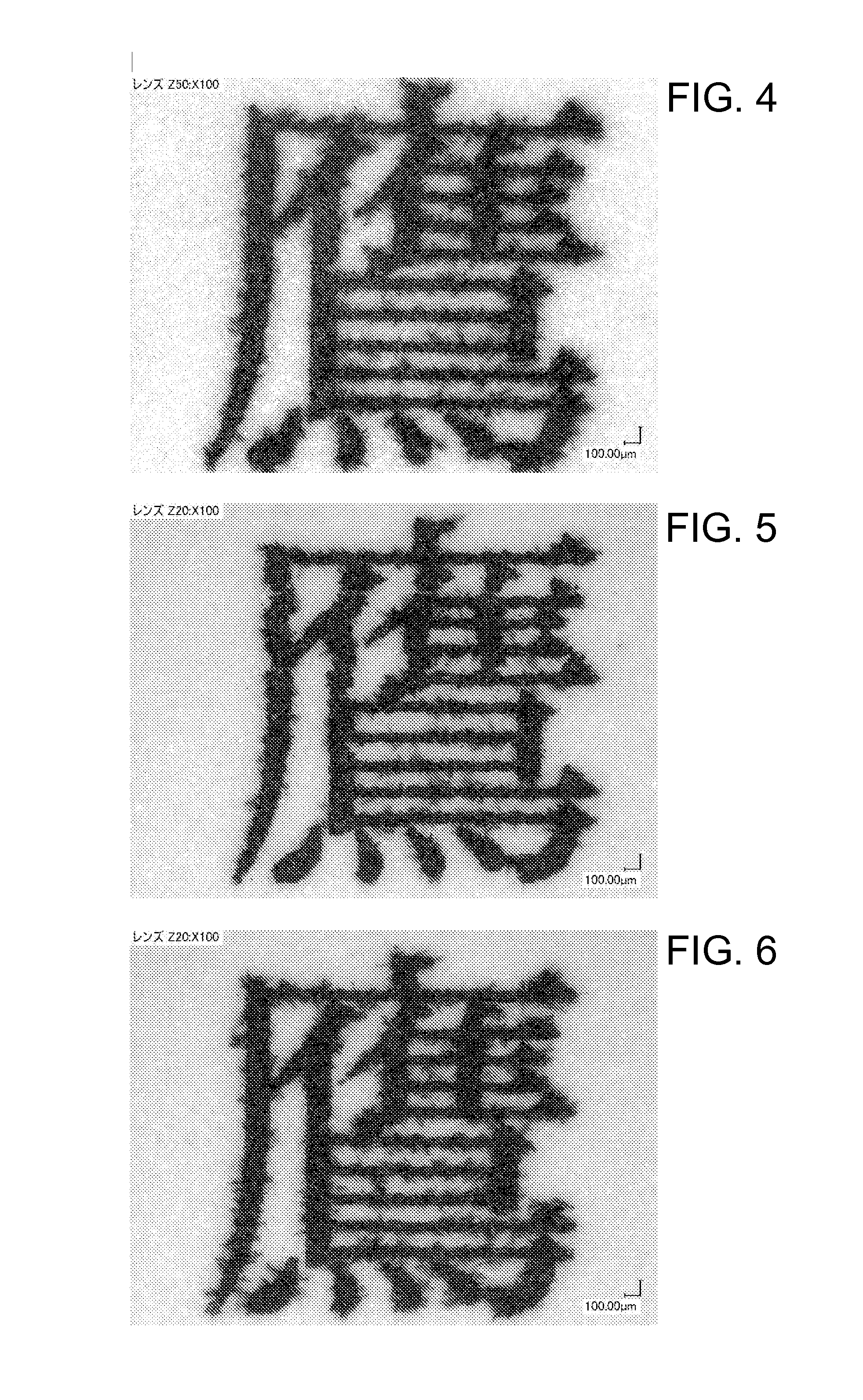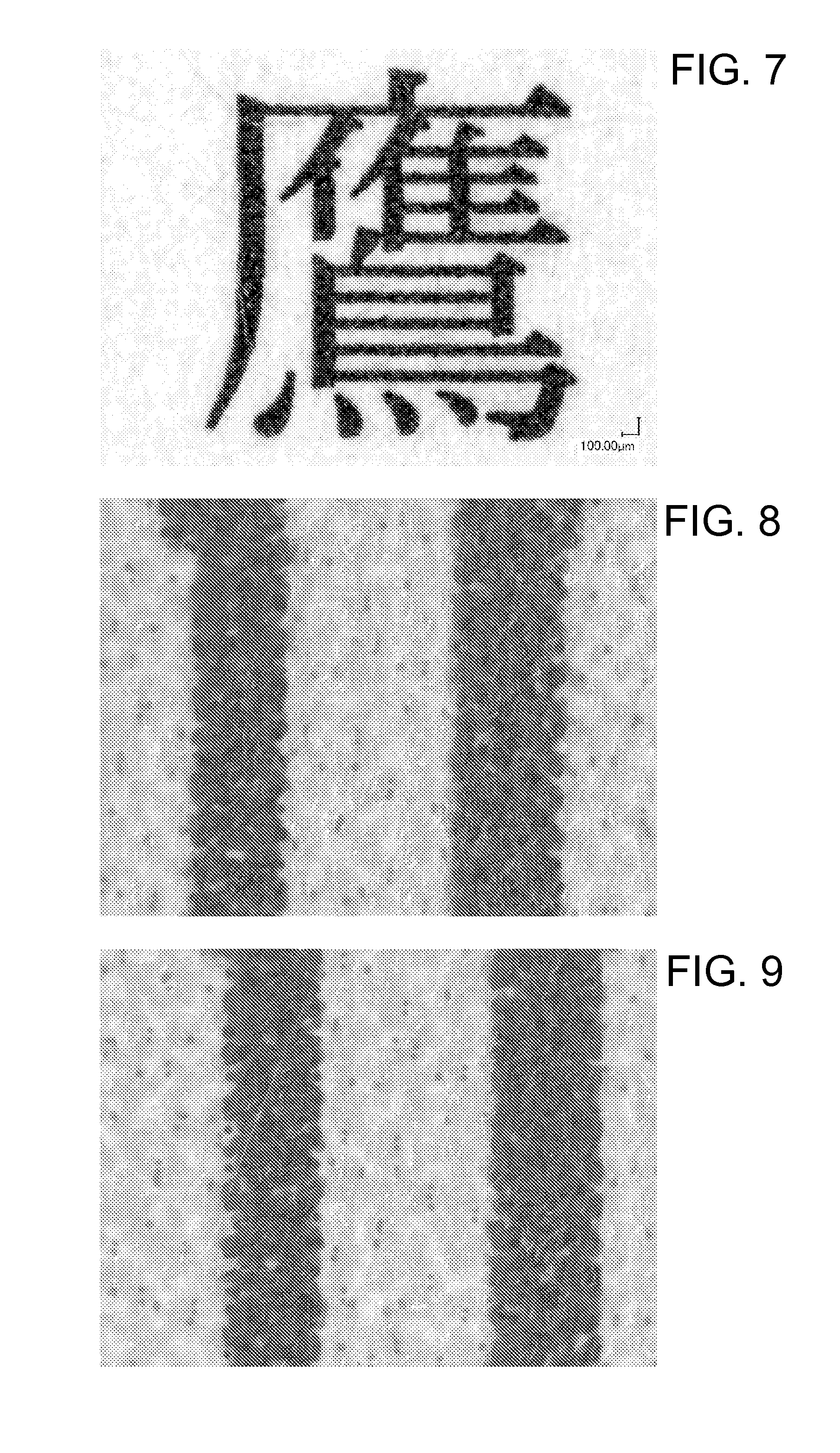Inkjet recording method
a recording method and inkjet technology, applied in the direction of printing, duplicating/marking methods, inks, etc., can solve the problems of limited printing accuracy, insufficient density, scarce penetration of ink, etc., to improve the fixability of the recording medium, suppress feathering and color bleeding, and clear image
- Summary
- Abstract
- Description
- Claims
- Application Information
AI Technical Summary
Benefits of technology
Problems solved by technology
Method used
Image
Examples
examples
[0162]The present invention will be explained in detail by way of examples and comparative examples.
[0163]First, the recording medium, the preparation of the ink-receiving solution, the preparation of the inkjet ink and the evaluation methods which were used in examples and comparative examples will be explained.
(1) Recording Medium
[0164]The following high-quality paper, coat paper and cloth as absorbing materials and the following polypropylene as a non-absorbing substrate which is a non-absorbing material to be printed by using the inkjet ink were used.
(a) High-Quality Paper
[0165]The high-quality paper (trade name: OK Prince) of Oji Paper Co., Ltd. was used as the high-quality paper which is uncoated paper.
(b) Coat Paper
[0166]The coat paper (trade name: OK Topcoat+) of Oji Paper Co., Ltd. was used as the coat paper which is coated paper.
(c) Cloth
[0167]Kanakin No. 3 attached white cloth for tests (based on JIS L0803)
(d) Polypropylene
[0168]Polypropylene (trade name: PET50 (K2411)) o...
examples 11 to 21
(b) Color Bleeding (Examples 11 to 21, Comparative Examples 6 to 13)
[0192]After an inkjet ink was printed on a recording medium by means of an inkjet recording device (manufactured by Seiko Epson Corporation, model: PX-101) and then left at ambient temperature for 5 minutes, the condition of the print product was evaluated based on the following criteria.
[criteria] AA: bleeding is not observed
A: bleeding is slightly observed
B: bleeding is somewhat observed
C: bleeding is markedly observed
(c) Water Resistance of Image on High-Quality Paper and Cloth (Examples 1 To 10, Comparative Examples 1 to 5)
[0193]After an inkjet ink was printed on a recording medium by means of an inkjet recording device (manufactured by FUJI FILM Dimatix, Inc., model: DMP-2831) and then left at ambient temperature for one day, eight 1 cm2 (1 cm×1 cm) waste paper sheets immersed in water were placed one upon another and reciprocated over the recording medium one time under a load of 200 g to evaluate the conditio...
example 1
[0196]An ink-receiving solution comprising CaCl2 as a metal salt shown in Table 4 was applied uniformly to the entire surface of high-quality paper by means of a meyer bar (#10) which is a kind of coating means and dried.
[0197]The amount of the ink-receiving solution applied to the recording medium was 200 μmol / cm2 as a metal salt.
[0198]An inkjet ink containing the pigment dispersion 1 was used to print a Chinese character meaning “falcon” at 7-point on the surface of the high-quality paper to which CaCl2 was adhered at a discharge rate of 10 m / sec, a drive frequency of 5 kHz and normal temperature (25° C.) by setting the dot pitch (dot interval) to 20 μm and using a piezo drive system inkjet recording device (FUJIFILM Dimatix Co., Ltd., model: DMP-2831). The print product is shown in FIG. 1. The feathering and water resistance of the obtained print product were evaluated.
PUM
| Property | Measurement | Unit |
|---|---|---|
| Electrical conductivity | aaaaa | aaaaa |
| Percent by mass | aaaaa | aaaaa |
| Percent by mass | aaaaa | aaaaa |
Abstract
Description
Claims
Application Information
 Login to View More
Login to View More - R&D
- Intellectual Property
- Life Sciences
- Materials
- Tech Scout
- Unparalleled Data Quality
- Higher Quality Content
- 60% Fewer Hallucinations
Browse by: Latest US Patents, China's latest patents, Technical Efficacy Thesaurus, Application Domain, Technology Topic, Popular Technical Reports.
© 2025 PatSnap. All rights reserved.Legal|Privacy policy|Modern Slavery Act Transparency Statement|Sitemap|About US| Contact US: help@patsnap.com



